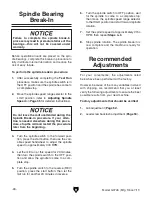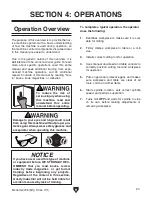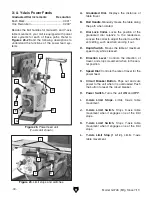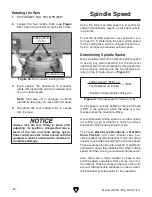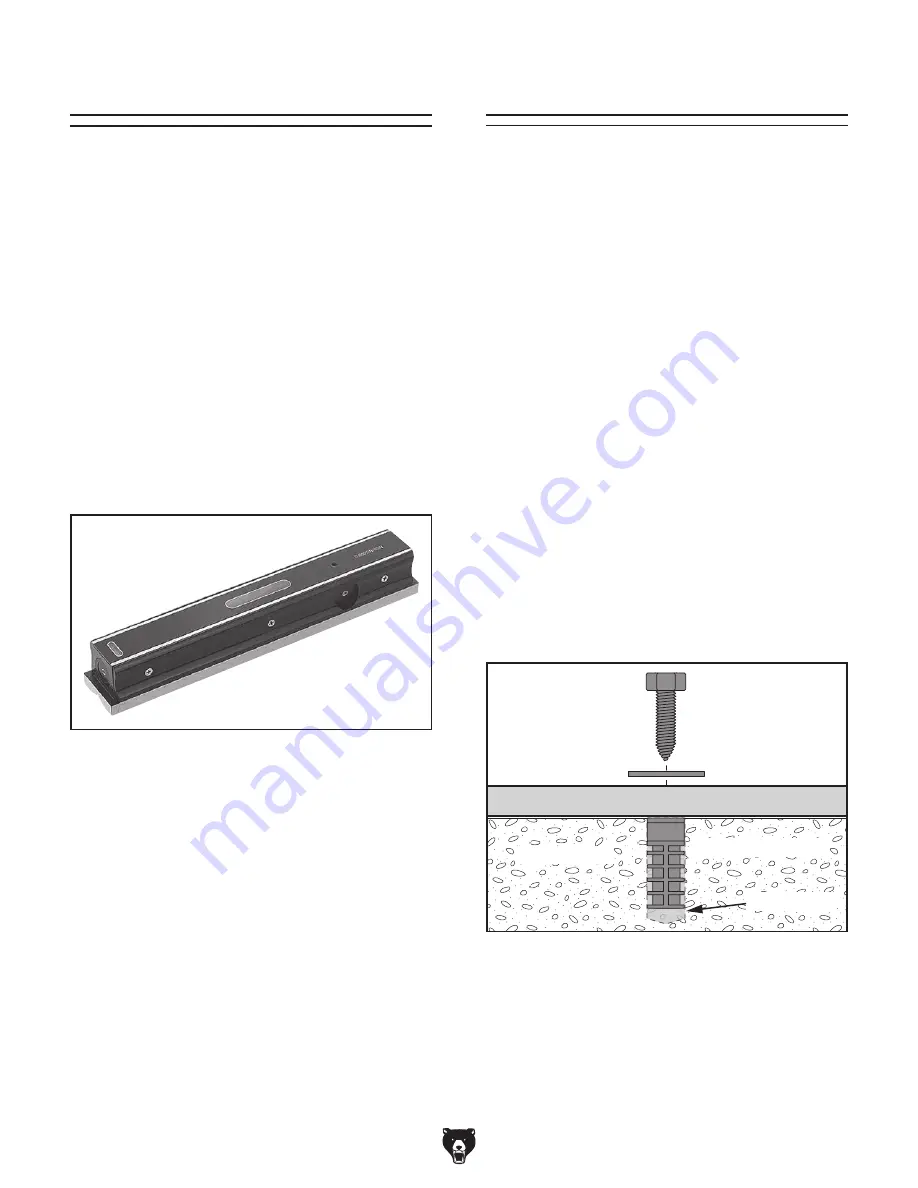
Model G0726 (Mfg. Since 7/11)
-19-
Leveling
Leveling machinery helps precision components,
such as dovetail ways, remain straight and flat
during the lifespan of the machine. Components
on an unleveled machine may slowly twist due to
the dynamic loads placed on the machine during
operation.
Use metal shims between the base and the floor
when leveling the machine.
For best results, use a precision level that is at
least 12" long and sensitive enough to show a
distance movement when a 0.003" shim (approxi-
mately the thickness of one sheet of standard
newspaper) is placed under one end of the level.
See
Figure 7 for an example of a high precision
level provided by Grizzly.
Figure 7. Model H2683 12" Master Machinist's
Level.
Anchoring machinery to the floor prevents tipping
or shifting and reduces vibration that may occur
during operation, resulting in a machine that runs
slightly quieter and feels more solid.
If the machine will be installed in a commercial or
workplace setting, or if it is permanently connect-
ed (hardwired) to the power supply, local codes
may require that it be anchored to the floor.
If not required by any local codes, fastening the
machine to the floor is an optional step. If you
choose not to do this with your machine, we rec-
ommend placing it on machine mounts, as these
provide an easy method for leveling and they have
vibration-absorbing pads.
Anchoring to Floor
Lag shield anchors with lag screws (see below)
are a popular way to anchor machinery to a con-
crete floor, because the anchors sit flush with the
floor surface, making it easy to unbolt and move
the machine later, if needed. However, anytime
local codes apply, you MUST follow the anchoring
methodology specified by the code.
Machine Base
Concrete
Lag Screw
Lag Shield Anchor
Flat Washer
Drilled Hole
Figure 8. Popular method for anchoring
machinery to a concrete floor.
Anchoring to Concrete Floors






















